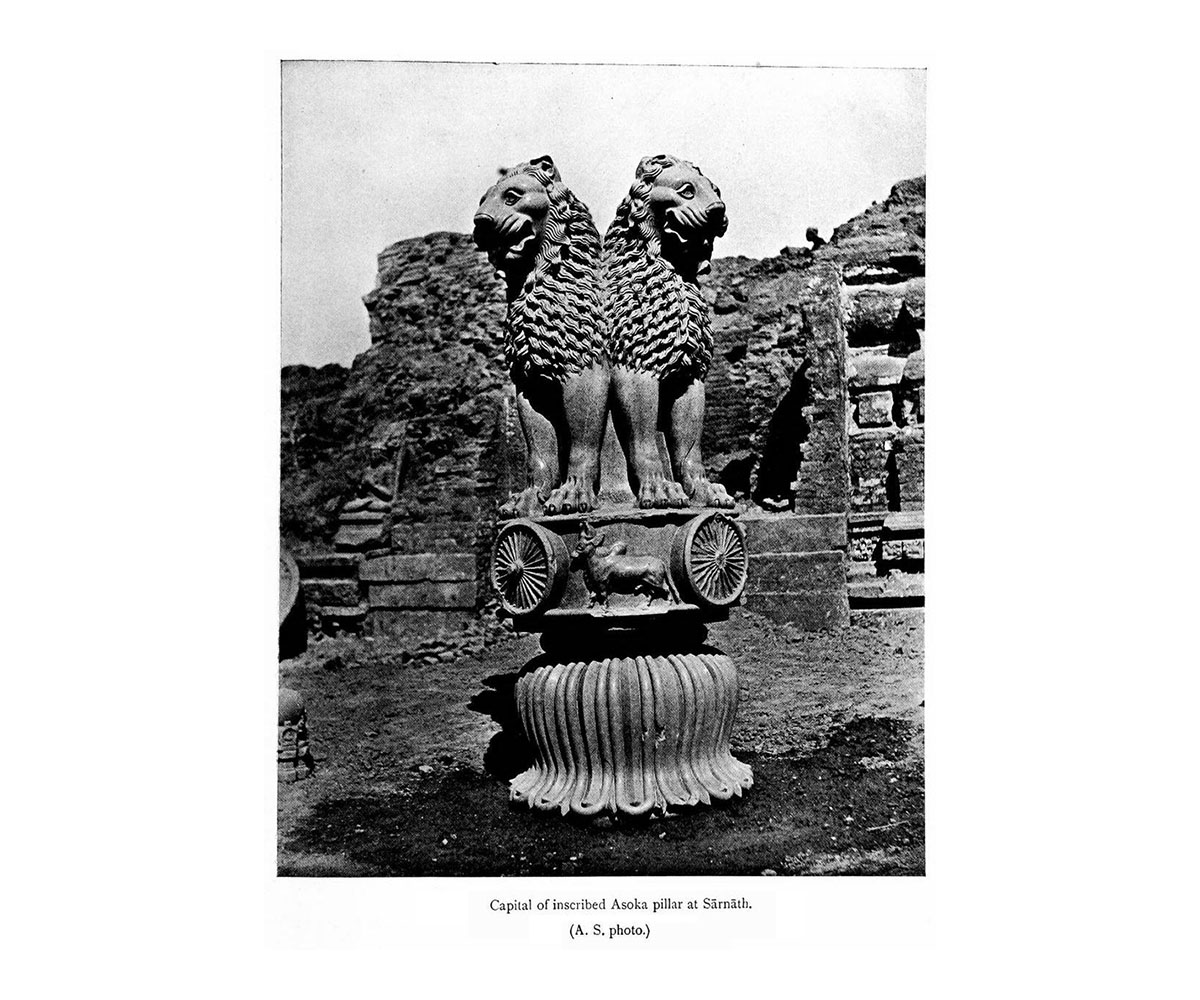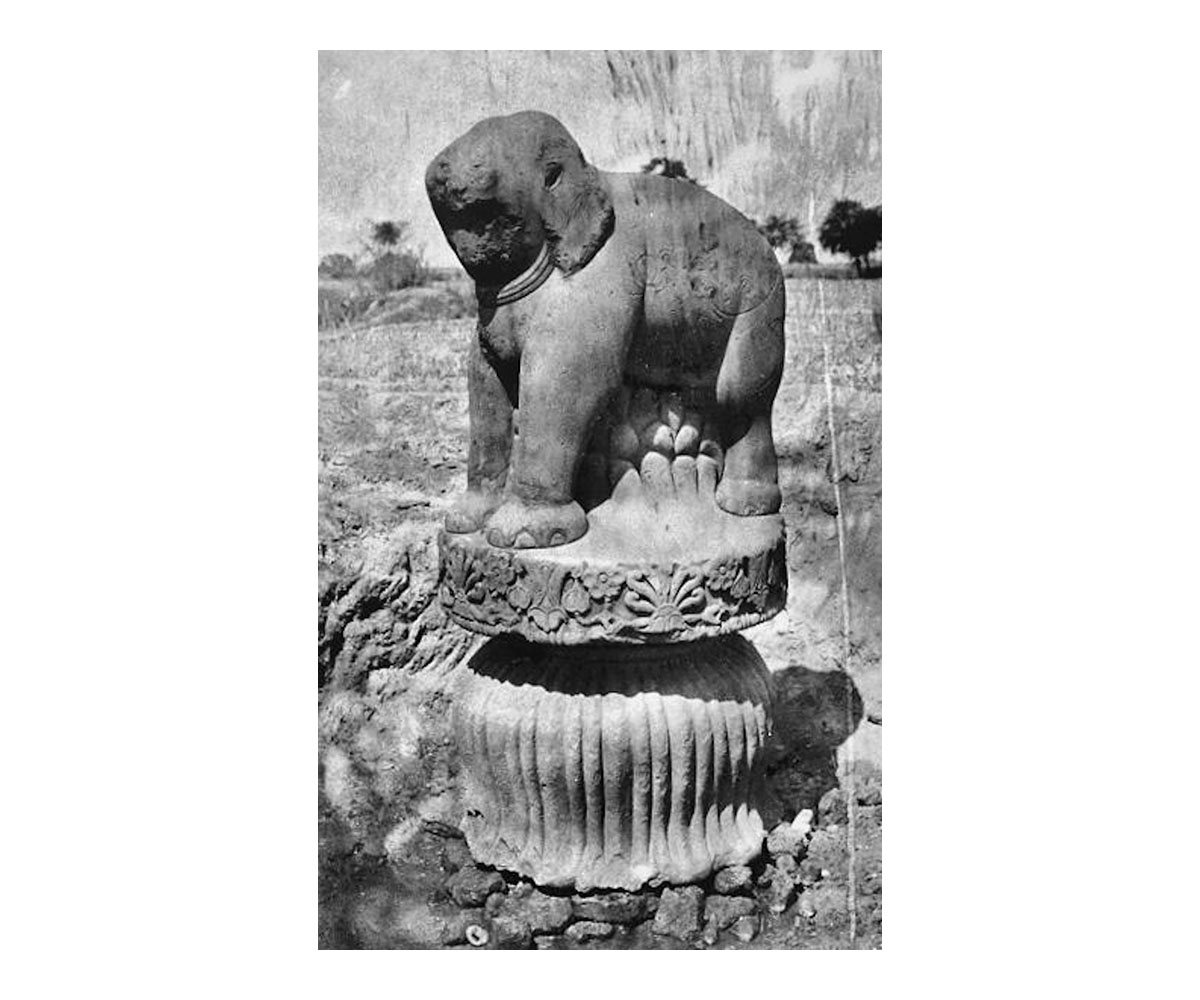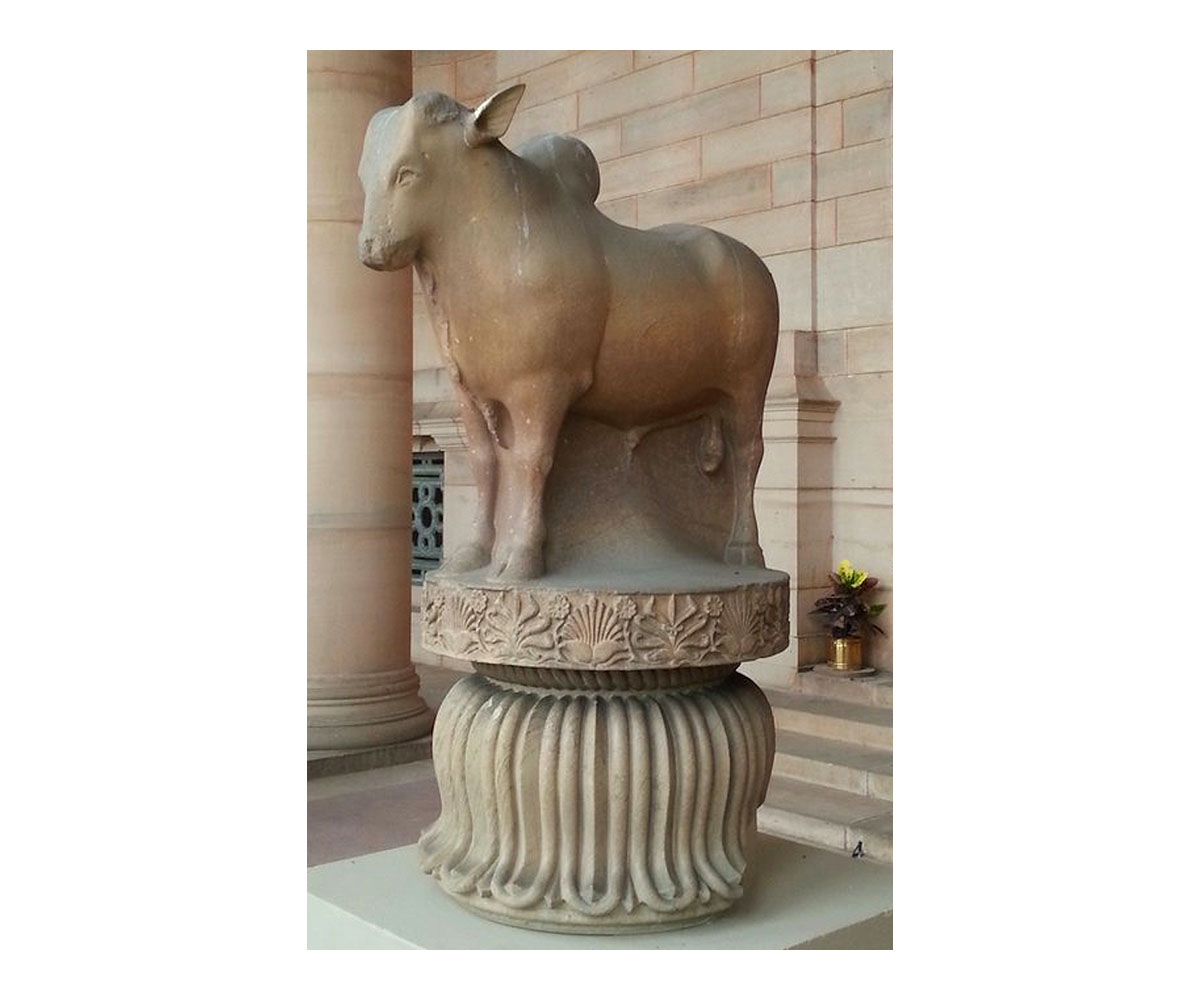ARTICLE
Ashoka Capitals
Capitals carved in the form of animal figures that surmounted the monolithic pillars commissioned by Mauryan emperor Ashoka (r. 268-232 BCE), possibly the oldest surviving examples of Indian stone sculpture. Like the pillars, each capital was carved from a single block of sandstone, and are highly polished in the characteristic Mauryan fashion. While twelve pillars have survived largely intact and many more have been found in fragments, only seven capitals have been recovered. The animals and motifs around the capitals are a combination of Buddhist and Mauryan political symbolism.
The pillar capitals are divided into three parts: the lotiform bell at the bottom; the abacus, and the animal sculpture on top. The lotiform bell-shaped bases of the capitals—named for their resemblance to an inverted lotus—are composed of long petal-like units enclosing a second row of smaller, more angular petals. The abacus is a band that goes around a capital and is decorated with floral and animal motifs in relief: flamed palmettes with multiple calyxes, rosettes and honeysuckles interspersed with figures of the lion, bull, horse and elephant. The animal sculptures, noted for their neat, restrained style and precise anatomical detail, are located at the top of the Ashokan capitals.
The pillar capitals found at Sarnath and Sanchi are designed with four addorsed lions at the apex, and carved figures of animals on the round abaci. The capital from Sarnath, the best preserved whose image is used as the Emblem of India, was possibly further surmounted by a dharmachakra on top of the lions. The round abacus is decorated with figures of the lion, elephant, horse and bull alternated with miniature dharmachakra motifs, shown as moving in a clockwise direction along the pradakshina (circumambulation) path taken around Buddhist shrines. The capital from Sanchi, structurally similar to the one from Sarnath, instead features motifs of pecking geese facing each other on the abacus, alternated with the honeysuckle motif. The capital on the Lauriya-Nandangarh pillar features a single, seated lion surmounting the pillar, with its hindquarters protruding beyond the round frame of the abacus and a damaged jaw. While the abacus is decorated with the pecking geese motif, the geese are in fact depicted as moving in the clockwise pradakshina direction. A capital recovered from Rampurva is surmounted by a seated and defaced lion, while the abacus is decorated with pairs of pecking geese similar to the Sanchi lion capital. Another lion capital and pillar were found at the site of Vaishali in Bihar. The abacus is plain and square, unlike the circular ones present in the other capitals. The stone lion on top is also less naturalistic and expressive in appearance than the. It has been suggested to be more similar in design to the lions on the railing of the stupa at Bharhut, made around 150 BCE, than to any of the other lion capitals. Lions are frequently used as symbols of an empire’s political might, but in this case they are also representative of the Buddha’s Shakya clan.
A second capital from Rampurva shows a zebu (a type of bull) which is rendered with greater anatomical accuracy than the lions on other capitals, while retaining the stately style characteristic of Ashoka capitals. The abacus features the closely packed design of flamed palmettes, rosettes, and honeysuckles. The Sankissa capital is crowned with a defaced standing elephant. The abacus is decorated with honeysuckle, stylised lotuses, rosettes and the bead-and-reel motif.
There is much speculation over the design of the pillars and their respective capitals: archaeologist John Boardman has compared the structure of the Ashokan Pillars to support pillars used in Achaemenid Persia; the stone lions of the Sarnath Capital, in particular, are noted for similarities with stone relief artwork from the city of Nineveh (ca. 650 BCE; present day Mosul, Iraq). The shape of the lotiform bell is not considered to be similar to pillars from Persia, owing to a different, swelling profile: however, the long, petal-shaped tongues on the lotiform bell are reminiscent of capital designs from Persepolis (Fars province, Iran). The bead-and-reel motif is one that Boardman claims is a direct import from Hellenistic Greece: originally devised from a turning technique on wood and metal, it was used as an architectural motif in Greece (ca. sixth century BCE) to define sculptural edges for mouldings. Floral motifs such as the flamed palmettes, inverted lotus, honeysuckle and rosettes are similar to architectural motifs prevalent in Ancient Greece (ca. seventh century BCE) and Mesopotamia, imported to Achaemenid Persia ca. 500 BCE. This “botanically incorrect” method of combining floral elements led to the development of a style which gained popularity throughout the ancient world, and was a source of inspiration for “Indian” variations on the honeysuckle palmette with clustered, stiff petals akin to a bush.
Today, the Rampurva bull capital is located at the Rashtrapati Bhavan in New Delhi. The Sarnath and Sanchi capitals have been separated from their pillars and shifted to the Sarnath Museum and the Sanchi Archaeological Museum respectively. The remaining four capitals are still in their original locations.
Bibliography
Our website is currently undergoing maintenance and re-design, due to which we have had to take down some of our bibliographies. While these will be re-published shortly, you can request references for specific articles by writing to hellomapacademy@map-india.org.









